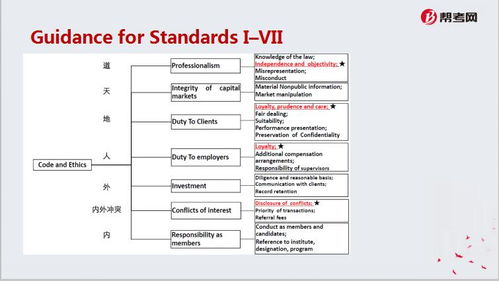The Dynamics of the Chemical Fibers and Textiles Industry
The chemical fibers and textiles industry is a complex sector that involves the production of various types of synthetic fibers, such as polyester, nylon, and spandex, as well as traditional natural fibers like cotton and silk. This industry plays a crucial role in global economic growth, providing employment opportunities for millions of people worldwide. The dynamics of this industry are influenced by several factors, including raw material availability, technological advancements, consumer demand, and government policies. As demand for sustainable and eco-friendly materials increases, the industry is also facing challenges such as competition from alternative fibers and concerns over environmental impact. Despite these challenges, the chemical fibers and textiles industry continues to grow rapidly, with new innovations and products being introduced regularly.
Introduction: The chemical fibers and textiles industry is a vital sector in the global economy, contributing significantly to employment, innovation, and consumer satisfaction. This industry is characterized by its high-tech nature, with advancements in materials science, manufacturing processes, and design concepts driving innovation. In this article, we will explore the key trends, challenges, and opportunities within the industry, using data and case studies to illustrate the complexities and potential of the sector.

Key Trends:
-
Sustainability and Environmental Responsibility: As consumers become more conscious about their environmental impact, the chemical fibers and textiles industry is witnessing a shift towards sustainable practices. Manufacturers are investing in eco-friendly raw materials, reducing waste, and adopting circular economies. For example, the production of polyester from recycled bottles has become a popular trend in the industry.
-
Technological Innovation: Advances in polymer chemistry and textile technology are driving innovation in the industry. New materials such as nanofibers, biopolymers, and conductive threads are being developed, offering enhanced performance and sustainability. Companies like Lycra, DuPont, and Tencel are leading the way in this area.
-
Globalization and Trade: The global market for chemical fibers and textiles is vast, with manufacturers operating across continents. The rise of e-commerce platforms has made it easier for companies to reach customers worldwide, while trade agreements and regulations can influence supply chains and pricing.
-
Emerging Markets: Asia, particularly China and India, are emerging markets that are driving growth in the chemical fibers and textiles industry. These countries have large labor forces and rising disposable incomes, making them attractive destinations for investment. However, they also face challenges such as regulatory compliance and quality standards.
Challenges:
-
High Raw Material Costs: The cost of raw materials such as petroleum and natural gas is a significant challenge for the industry. High prices can lead to increased production costs and affect profit margins.
-
Labor Shortages: With the growing demand for chemical fibers and textile products, many manufacturers are facing labor shortages. This can lead to higher wages and decreased productivity.
-
Regulatory Changes: Government policies and regulations can impact the industry's operations. For example, anti-dumping and anti-subsidy laws can affect imported goods, while labor laws can impact the supply chain.
Opportunities:
-
Emerging Markets: As mentioned earlier, emerging markets such as Asia offer growth opportunities for the industry. Companies that can adapt to local regulations and culture can tap into these markets effectively.
-
Sustainable Practices: The increasing focus on sustainability means that companies that adopt eco-friendly practices can differentiate themselves in a crowded market. For example, Tencel, a Finnish company that produces bamboo-based textiles, has gained a reputation for sustainability and innovation.

-
Technological Advancements: As new technologies emerge, companies that invest in research and development can stay ahead of the competition. For example, Lycra, a French company that manufactures spandex, invests heavily in research to develop new materials and improve performance.
Case Study: One example of how the chemical fibers and textiles industry is evolving is the story of Lycra, a French company that specializes in spandex fabrics. Lycra was founded in 1960 by Pierre Dudley and Jean-Pierre Lecointre, who were inspired by the success of Lycra stockings worn by athletes during the 1968 Summer Olympics in Mexico City. Today, Lycra is one of the world's largest producers of spandex, with a wide range of applications in sportswear, apparel, and other industries.
In recent years, Lycra has focused on innovation and sustainability, launching new products that are both comfortable and eco-friendly. For example, Lycra has developed a line of stretchy, breathable fabrics made from recycled plastic bottles, which are designed to reduce waste and improve comfort. Additionally, Lycra has invested in renewable energy sources and is working towards becoming carbon neutral by 2025.
Conclusion: The chemical fibers and textiles industry is a dynamic and ever-evolving sector, driven by technological advancements, consumer preferences, and global economic trends. While there are challenges such as high raw material costs and labor shortages, there are also numerous opportunities for growth and innovation. By staying ahead of the curve and embracing sustainable practices, companies can thrive in this competitive industry and meet the needs of a growing global population.
随着科技的进步和全球经济的快速发展,化纤纺织品行业在近年来呈现出蓬勃发展的态势,本篇文章将围绕化纤纺织品行业进行深入探讨,通过案例分析、行业趋势预测等角度,为大家呈现一个全面的视角。
化纤纺织品行业概述
化纤纺织品行业主要涉及纤维的合成与加工,包括各种纤维材料的生产、研发、销售等环节,随着环保意识的提高和消费者对舒适度与美观度需求的提升,化纤纺织品行业在材料选择、生产工艺、产品设计等方面均呈现出新的发展趋势。
行业案例分析
某知名化纤纺织品企业介绍
该企业专注于高性能纤维材料的研发和生产,拥有先进的生产设备和技术,产品质量稳定可靠,其产品广泛应用于服装、家居装饰、汽车配件等领域,该企业在市场上的表现一直很强劲,受到了广大消费者的青睐。
环保化纤纺织品的应用与推广

随着环保意识的提高,越来越多的企业开始关注环保化纤纺织品的研发和生产,该企业积极采用环保材料和技术,生产出符合环保标准的产品,受到了消费者的广泛好评,该企业还通过开展环保教育活动,提高公众的环保意识。
行业发展趋势预测
-
材料创新:随着科技的不断进步,化纤纺织品的材料选择将更加多样化,包括天然纤维、再生纤维、生物纤维等,化纤纺织品行业将更加注重材料的环保性和可持续性。
-
生产工艺升级:随着生产技术的不断进步,化纤纺织品的生产工艺将更加高效、环保、节能,化纤纺织品行业将更加注重生产工艺的优化和升级。
-
产品设计创新:随着消费者对舒适度与美观度需求的提升,化纤纺织品行业的产品设计将更加注重个性化、时尚化,化纤纺织品行业将更加注重产品的创新设计和差异化。
英文表格补充说明
以下是关于化纤纺织品行业的英文表格补充说明:
化纤纺织品行业主要产品分类及市场表现
| 产品分类 | 市场表现 | 相关企业案例 |
|---|---|---|
| 纤维材料 | 稳定增长 | 该企业专注于高性能纤维材料的研发和生产 |
| 服装面料 | 市场需求大 | 该企业产品广泛应用于服装领域 |
| 家居装饰面料 | 市场需求稳定 | 该企业产品深受消费者喜爱 |
| 汽车配件面料 | 新兴市场 | 随着汽车行业的快速发展,该企业产品逐渐受到关注 |
化纤纺织品行业是一个充满机遇和挑战的行业,随着科技的进步和全球经济的快速发展,该行业将继续保持蓬勃发展的态势,化纤纺织品行业将更加注重材料创新、生产工艺升级、产品设计创新等方面的发展,该行业也将面临更多的机遇和挑战,需要企业不断加强技术研发和市场营销能力,提高产品质量和服务水平,以适应市场的变化和发展需求。
Articles related to the knowledge points of this article:
Exploring the Future of Fashion with Müye Textiles
Embracing Innovation:The Journey of Shaoxing Jingsi Textiles
Mastering Photoshop for Editing Textiles A Comprehensive Guide
The Art of Interior Textiles:Crafting a Masterpiece in the Canvas
The Ultimate Guide to Choosing the Best Materials for Your Fashion Needs
The Fabric of Luxury:An In-depth Look at Shangbo Hotel Textiles



